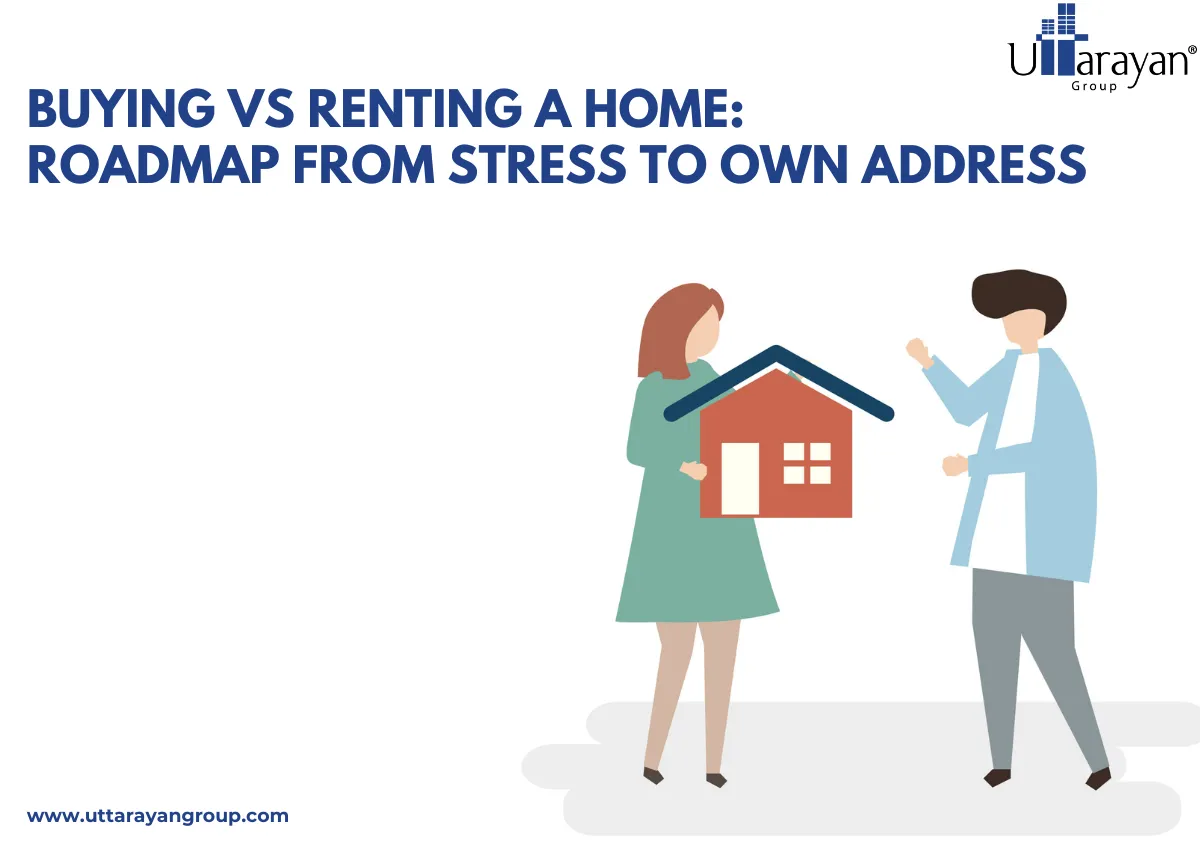Get Support
+91 98540 40005
10 Edible Home Garden Plants That Elevate Aesthetics And Utility

Home garden plants that can double as décor and cooking ingredients? Yeah, maybe in big gardens or flats with oversized balconies. But it definitely must be impossible in a 2BHK or 3BHK flat.
Picture yourself plucking fresh herbs right from your garden for a morning chai. Or imagine picking a few juicy tomatoes for your curry or edible flowers for garnishing cakes and pastries that you have just learned to bake.
Sounds like a dream, right? Well, this can be your reality, too, and it doesn't matter if you have a small balcony.
And what's more, you don't need to choose between beauty and functionality when designing your balcony or backyard with home garden plants. There are plenty of edible plants that not only provide fresh and organic food but also add a touch of magic to your outdoor (or even indoor) space. The best plants for home garden are those that thrive in your local climate with minimal maintenance.
So, whether you have a sprawling backyard, a cozy balcony, or even a small terrace, these 10 edible plants will enhance the aesthetics of your home while offering delicious and nutritious benefits.
1. Tulsi (Ocimum sanctum)
Why it's great:
- Whether you want it as a sacred plant with deep cultural significance or simply for its medicinal qualities, it's a plant with numerous benefits
- It attracts bees and butterflies that will enhance pollination in your garden
- It is a very hardy home garden plant and requires minimal care
Edible Uses:
- You can mix fresh Tulsi leaves with your regular chai leaves and brew it for a soothing drink
- You can use it as an herbal kadha (mixing it with black pepper and ginger) for boosting immunity
- Add to fresh juices and detox drinks for that extra benefit
Gardening Tip: Tulsi plants thrive in sunlight, so make sure they are placed in a corner or countertop where there is enough light. Watering it moderately is enough, but trim the flowers to encourage leaf growth.
2. Marigold (Tagetes)
Choosing the right flower plants for a home garden can add beauty and fragrance to your living space.
Why it's great:
- These vibrant orange and yellow flowers come in handy for pujas and decorations
- As they are natural pest repellents, they act as warriors for your other edible plants in your home garden
- Easy to grow in any season
Edible Uses:
- You can add the petals to salads for colour and mild flavour
- It can be used in herbal teas for its medicinal benefits
- Some regional Indian recipes incorporate this home garden plant for its subtle spice (get ready to try out new recipes)
Gardening Tip: Gently remove dead or dry flowers (deadheading) regularly to ensure continuous blooming.
3. Methi (Fenugreek - Trigonella foenum-graecum)
Why it's great:
- This quick-growing leafy green home garden plant has wonderful nutritional benefits
- They don't need a large space and can be grown in small containers
- It adds a rustic charm to kitchen gardens with its visually aesthetic appeal
Edible Uses:
- You can use fresh methi leaves in parathas, curries, and dal or in any other way you want
- Dry the leaves (kasuri methi) of this home garden plant for year-round use as dry masala in your curries and gravies
- Sprout fenugreek seeds and add to salads for extra health benefits
- Drink soaked methi water on an empty stomach as detox water for numerous medicinal benefits
Gardening Tip: Soak seeds overnight before planting for faster germination.
4. Curry Leaves (Murraya koenigii)
Why it's great:
- It's one of the most common (and tasty) staples in Indian cooking, especially in South Indian cuisine
- It's a perennial (lasting long) home garden plant with glossy green leaves
- They require minimal maintenance
Edible Uses:
- Used in tempering dals, sambhar, and chutneys
- Enhances the aroma of various rice dishes like lemon rice
- It can be dried and powdered for later use
- It is also great for the hair when soaked in oil
Gardening Tip: Prune this home garden plant regularly to encourage bushier growth.
5. Pomegranate (Punica granatum)
Why it's great:
- It has both beautiful red flowers and glossy green foliage
- This home garden plant is high in antioxidants and great for immunity
- It can be grown in pots or small spaces
Edible Uses:
- Sprinkle fresh seeds (arils) on salads and desserts
- Use in chutneys and raitas
- Juice the fruit for a refreshing drink or simply eat it as a whole for health benefits and otherwise
Gardening Tip: Pomegranate thrives in well-drained soil and full sun. Plus, if you want a vibrant outdoor space, consider growing such flower plants for home garden in different colours and sizes.
6. Spinach (Palak - Spinacia oleracea)
Why it's great:
- This home garden plant is not only fast-growing but also rich in nutrient-packed leafy greens
- Can be grown year-round in India
- It will add a fresh green contrast to your home garden
Edible Uses:
- Essential for making palak paneer and dal palak
- Add to smoothies for an iron boost
- Use in stuffed parathas for a wholesome meal
Gardening Tip: Regular harvesting of thishome garden plant promotes continuous leaf growth.
Cherry Tomatoes (Solanum lycopersicum var. cerasiforme)
Why it's great:
- These cute and bright red, yellow, or orange fruits add colour to your home garden
- It can be grown in containers or hanging baskets (which means no hassle at all)
- Sweet and juicy taste
Edible Uses:
- Toss into chaats and salads
- Use in homemade pasta sauces and chutneys
- Eat fresh off the vine as a garden snack
Gardening Tip: Support such home garden plants with stakes or cages to prevent sprawling.
8. Indian Basil (Ram Tulsi - Ocimum tenuiflorum)
Why it's great:
- Deep green and purple-tinged leaves create a striking contrast in your garden
- It is aromatic and full of flavour
- It has a lot of medicinal properties and multiple health benefits
Edible Uses:
- Make herbal teas for cold relief
- Add to homemade masala chai
- Use it as an Ayurvedic remedy for respiratory issues
Gardening Tip: Pinch off flowers to encourage more leaf growth. Remember, Tulsi is one of the best plants for home garden as it purifies air, adds colour, and requires minimal care.
9. Drumstick (Moringa oleifera)
Why it's great:
- Tall home garden plant with delicate, feathery green leaves
- Highly nutritious, packed with vitamins and minerals
- Flowers, leaves, and pods are all edible
Edible Uses:
- Use drumstick pods in sambhar and curries
- Add leaves to dals for extra nutrition
- Dry and powder leaves for health supplements
Gardening Tip: Such low-maintenance flower plants for home garden thrive very well in Indian climates and require minimal care.
10. Lemongrass (Cymbopogon citratus)
Why it's great:
- Tall, grassy plant with a refreshing lemon scent
- It acts as a natural mosquito repellent
- Low-maintenance and drought-tolerant home garden plant
Edible Uses:
- Brew into herbal tea or regular tea for relaxation
- Add to Thai and Indian curries for flavour
- Use in detox drinks and kadhas
Gardening Tip: Trim this home garden plant regularly to promote new growth.
Final Thoughts
Why settle for a plain vegetable garden when you can have one that looks absolutely stunning? Growing a mix of flowers, vegetables, and herbs ensures you have the best plants for home garden that are both useful and beautiful.
With these 10 edible plants, you don't have to compromise between beauty and functionality. So, whether you want there to be an explosion of colour, a fragrant atmosphere, or simply a practical herb garden with ingredients for your kitchen, include these simple but nutritious home garden plants to create a garden vibe that feeds both your stomach and your soul.
Check out flats in Guwahati where you can easily plant these home garden plants and elevate your home's aesthetics.
Let me know in the comments which of these gorgeous edibles you will plant first.
FAQs for Home Garden Plants
1. How do I choose the right plants for my home garden?
Consider your climate, available sunlight, space, and the type of plants you prefer (indoor, outdoor, flowering, vegetables, etc.).
2. How often should I water my plants?
The watering frequency depends on the plant type, soil, and climate. Most plants need watering when the top inch of soil feels dry. Overwatering is a common mistake, so ensure proper drainage.
3. What are some easy-to-grow plants for beginners?
Snake plant, pothos, spider plant, aloe vera, basil, mint, and marigolds are great for beginners as they require minimal care.
4. How can I prevent pests in my home garden?
Use natural remedies like neem oil, soapy water, or companion planting (e.g., marigolds to deter pests). Regularly inspect leaves for any signs of infestation.
5. What is the best soil for home gardening?
Loamy soil with good drainage and organic compost is ideal. Different plants may require specific soil types, such as succulents needing sandy soil.
6. How can I grow plants in limited space?
Use vertical gardening, hanging planters, or container gardening. Opt for compact plants like herbs, ferns, or dwarf vegetables.
7. Do indoor plants improve air quality?
Yes! Plants like snake plants, peace lilies, and pothos help purify the air by absorbing toxins and increasing oxygen levels.
8. How do I fertilize my plants naturally?
Use organic compost, banana peels, eggshells, coffee grounds, or homemade liquid fertilizers like compost tea.
9. What's the best way to prune plants?
Use clean, sharp scissors or pruning shears. Trim dead leaves, overgrown branches, or faded flowers to promote new growth.
10. How can I revive a dying plant?
Identify the issue-check for overwatering, under watering, pests, or nutrient deficiency. Trim dead parts, repot if needed, and adjust watering and sunlight accordingly.
11. Can I grow vegetables at home without a garden?
Yes! Many vegetables like tomatoes, lettuce, peppers, and herbs grow well in containers on balconies or windowsills.
12. How much sunlight do most plants need?
Most plants require at least 4-6 hours of direct sunlight. However, shade-loving plants like ferns and snake plants thrive in low light.
13. Why are my plant's leaves turning yellow?
This could be due to overwatering, under watering, poor drainage, or nutrient deficiencies. Assess and adjust care accordingly.
14. Can I grow plants from kitchen scraps?
Yes! You can regrow scallions, lettuce, carrots, potatoes, and basil from scraps in water or soil.
15. How do I maintain my home garden during extreme weather?
Protect plants from frost with covers, bring potted plants indoors, and provide shade during heat waves. Adjust watering based on weather conditions.
Looking for a dream home?
We can help you realise your dream of a new home.




0 Comments